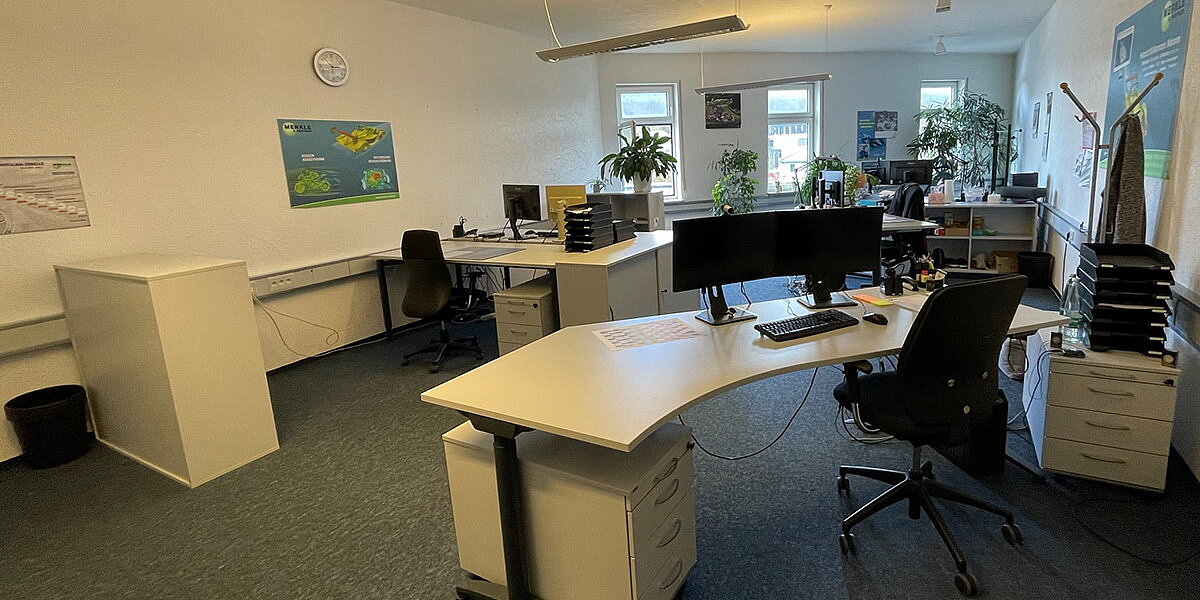Windows open... but for how long?

For air-conditioned rooms, the air exchange rate indicates how often the complete room volume of air is exchanged within one hour so that there is enough oxygen for everyone.
For offices, the standard suggests a value of 3-6 air changes. If the fear sweat of students, e.g. during exams in the lecture hall, is added to this, 8-10 air changes per hour are recommended. Air-conditioning systems are therefore dimensioned in such a way that the required volume flow can be maintained in relation to the size of the room. The quality of the air exchange, on the other hand, is rarely evaluated. After all, it would be conceivable that the cubic meter of fresh air would disappear right back into the exhaust system without providing a better room climate and fresh oxygen. Since the standard gives preference to quantity over quality, according to the motto: "A lot helps a lot", the solution in most buildings is rather too large air conditioning.
Now, however, both in one's own four walls, but also in older offices, there are only "air conditioners" in the form of windows that can be opened. Especially in winter, there are fractions who would rather freeze to death than suffocate in the stale air, others have no problem with too little oxygen, but very much with cold temperatures. A gender-specific allocation of these two extreme cases to men, women and so far not existing Diversen I leave out for possible discrimination reasons, although a clear picture arises here for me!
Increasingly, however, it comes due to massive heat-insulation-measures both with renovated and with new buildings increasingly to mold-formation since accumulated humidity provides for a small biotope at the bedroom-ceiling due to insufficient ventilation.
After recently witnessing mutual accusations by a married couple that one was not ventilating enough while the other could not define exactly how long the window should be left open, I decided to approach this topic scientifically using brute force methods.
The sales room

The bare, scientific data:
Room volume: 168.75 m³
Open window area: 1.1155 m²
Outside temperature: -7 °C
Inside temperature when opening the window: 21 °C
3 radiators with 88.2 W each
The interior temperature of the room settles at about 20.9 °C when taking into account the heat transfer at the walls and the supplied heat.
Yes, we have had an outside temperature of -7 °C and below on the harsh eastern Alps quite often this winter, despite progressive climate change. We are also still no strangers to snowfall here, which I can prove with photographic images.
But back to the topic:
Starting from a comfortably heated room, we tear open a window in our scenario and see what happens.
We track the incoming and outgoing volume flows and the average temperature in the room.
Since warm, stale air flows through the same window on the building as the cold outside air flows in, only half of the area can flow inward and outward respectively from the open window. More precisely, the mass flow must be 0 on average. Since cold air has a higher density, the area fraction is somewhat smaller here.
The boundary conditions of the external environment have an influence that cannot be neglected and must be described cleanly in the calculation model. According to the textbook, the environment would have to be represented with about 10 room lengths, but this would lead to very large computational models and long computation times. So it is worthwhile to think about how to choose physically reasonable conditions and settings for the simulation in the software used (in our case Star CCM+).
Results
Here are some results from the CFD simulation.
The inflowing and outflowing volume flow of the air is approx. 0.16 m³/s and 576 m³/h respectively and remains almost constant over the period of 5 minutes considered. The average temperature in the room drops by 3.2 K after 5 minutes according to Figure 2. The walls and furnishings also cool down somewhat and must therefore be taken into account in the balance. During this time, about 48 m³ of air is exchanged, which corresponds to about 30% of the total air volume in the room. The flow velocities in and out are about 0.54 m/s on average. The air exchange rate with an open window and the above-mentioned boundary conditions is therefore 3.4, which is not bad at all.

It is interesting to see how the cold air, which is heavier than warm air, evenly fills the room from below. Like a water basin that slowly fills up... If one wants to heat up the lowered room temperature after 5 minutes again to the original value electrically, the fresh air costs us with the world-wide highest electricity costs of assumed 42 cent / kWh thus somewhat more than 20 cent.
Findings from the simulation

Fresh air through open windows presuppose a driving force, which is given by the difference in density of air at indoor and outdoor temperature. Incoming air and outgoing air have almost outside temperature and room temperature for a longer period of time, until quasi the room is filled with cold air up to the top of the window.
With a ventilation time of 5 minutes at -7 °C and a room temperature of 20 °C, about 30 % of the air is exchanged in our case. The more windows are open, the shorter the ventilation time is to get the same result. The number of windows has an almost linear effect.
The windows should only remain open as long as the interior furnishings and walls do not cool down appreciably. If the temperatures of the furnishings and walls drop below 17.4 °C at a humidity of 80%, the mold criterion is already met. The course of the furnishings temperatures and the air can be seen in the simulation video below, so after 5 minutes of ventilation time, an effect is already noticeable here on the tables and walls.
With lower differential temperatures between inside and outside, the volume flow decreases and the required ventilation time increases accordingly. In summer, when the temperatures inside and outside are almost the same, this can mean opening the window for half an hour without much happening.
Incidentally, the approximation formulas in VDI 2078, which describe the required cooling load of rooms with and without air conditioning, estimate the resulting volume flow of 0.23 m³/s to be significantly too high, at least in our case (CFD: 0.16 m³/s).
But back to our initial problem with mold in the bedroom.
Two people together excrete about 500 - 1,000 g of water per night. When airing in the morning, this amount of water vapor must be removed with the warmer room air (high water content) minus the incoming cold air (low water content). With a larger temperature difference between inside and outside, this is only the case after about half an hour of airing. With this amount of water, the air is already saturated with an assumed room volume of 40 m³, i.e. the room air must be exchanged several times so that the air humidity after airing in the morning is again as high as in the evening. If the window is open for so long, the room also cools down, i.e. the water transport to the outside becomes even worse.
By the way, temperatures between 16 °C and 18 °C and a relative humidity between 45 % and 55 % are desirable in a bedroom.
If mold still forms despite regular, sufficiently long ventilation, the problem is probably rather different. There may be local cold bridges due to poor insulation on the building where water condenses from the air (temperatures below the dew point), the walls or one wall may be damp for some reason, or one of the two sleepers may be bed-wetting. Or maybe the cleaning lady is just watering the carpet in addition to the plants.
Getting more water out of a room by just airing it is more difficult, as anyone who has had a flood knows. One speaks with the then necessary, professional dehumidifiers of electricity costs in a few days of several 100 €. Unfortunately, opening windows for 20 cents is no longer enough.
Yours Stefan Merkle

PS: In the model considered, the heat transfer to the outside through the walls is taken into account, as are the heaters under the windows.
PPS: Once moisture has settled as water on cold walls, heat must be supplied for the evaporation of the water. Per kg of water this is 2257 kJ. A building dryer with 1.5 kW power needs 25 min for this.
The energy for the evaporation of water during sweating comes from the body itself. When sweat evaporates on the skin, it draws heat energy from the skin, which is released by the body. This heat energy comes from the body's own metabolic activity and is used to evaporate the sweat.
This process of evaporative cooling is an important mechanism that our body uses to maintain a constant body temperature and avoid overheating. The release of sweat on the skin removes heat energy from the body to help evaporate sweat, which lowers body temperature.
PPPS: For those who want to do the math on the bedroom, air at -7°C and 100% humidity can hold just 2.76 grams of water per cubic meter of dry air. At 18°C, it is 15.37 g at 100% humidity. The volume flow according to DIN is 215 m³/h.